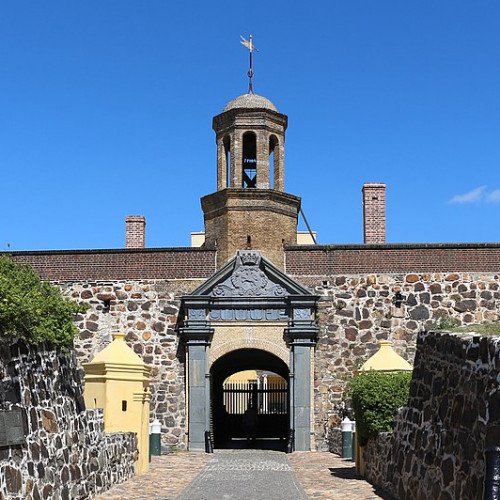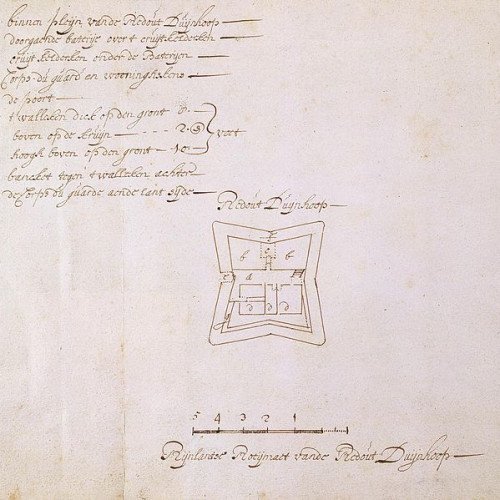Castles of "South Africa" CASTLE OF GOOD HOPE vs REDOUBT DUIJNHOOP

CASTLE OF GOOD HOPE
The Castle of Good Hope (Dutch: Kasteel de Goede Hoop; Afrikaans: Kasteel die Goeie Hoop) known locally as the Castle or Cape Town Castle is a bastion fort built in the 17th century in Cape Town, South Africa. Originally located on the coastline of Table Bay, following land reclamation the fort is now located inland. In 1936 the Castle was declared a historical monument (now a provincial heritage site) and following restorations in the 1980s it is considered the best preserved example of a Dutch East India Company fort Built by the Dutch East India Company between 1666 and 1679, the Castle is the oldest existing building in South Africa. It replaced an older fort called the Fort de Goede Hoop which was constructed from clay and timber and built by Jan van Riebeeck upon his arrival at the Cape of Good Hope in 1652. Two redoubts, Redoubt Kyckuit (Lookout) and Redoubt Duijnhoop (Duneheap) were built at the mouth of the Salt River in 1654. The purpose of the Dutch settlement in the Cape was to act as a replenishment station for ships passing the treacherous coast around the Cape on long voyages between the Netherlands and the Dutch East Indies (now Indonesia). During 1664, tensions between Great Britain and the Netherlands rose amid rumours of war. That same year, Commander Zacharias Wagenaer, successor to Jan van Riebeeck, was instructed by Commissioner Isbrand Goske to build a pentagonal fortress out of stone. The first stone was laid on 2 January 1666. Work was interrupted frequently because the Dutch East India Company was reluctant to spend money on the project. On 26 April 1679, the five bastions were named after the main titles of William III of Orange-Nassau: Leerdam to the west, with Buuren, Katzenellenbogen, Nassau, and Oranje clockwise from it. The names of these bastions have been used as street names in suburbs in various provinces, but primarily of Cape Town, such as Stellenberg, Bellville (33°52′07″S 18°39′17″E).
Statistics for this Xoptio

REDOUBT DUIJNHOOP
The Redoubt Duijnhoop was a square demi-bastioned clay and timber Redoubt built fort constructed at the mouth of the Salt River, leading into Table Bay, South Africa in January–February 1654. It formed part of the defences of the Vereenigde Oost-Indische Compagnie 'VOC' replenishment station, which had been established under Jan van Riebeeck in 1652. The purpose of the station was to supply ships travelling between the Netherlands and the Dutch East Indies. The redoubt was armed with two 12-pounder guns, and on 22 April 1654, Van Riebeeck informed the VOC's directors that "in addition to the Fort de Goede Hoop, a redoubt named Duijnhoop standing at the Salt River for the protection and reinforcement of this Table Bay, has been fully placed in a position of defence." In addition to covering the approach to the Salt River mouth, Duijnhoop served as a signalling station to warn the Fort of approaching ships. By 1661, Duijnhoop had been abandoned, and fallen into disrepair. It was repaired after a warning that a French fleet might pass the Cape, and a second redoubt, named Santhoop, was built nearby. By 1666, however, both had been allowed to fall into disrepair again. Duijnhoop was demolished in 1672. Duijnhoop is sometimes confused with the Fort de Goede Hoop.